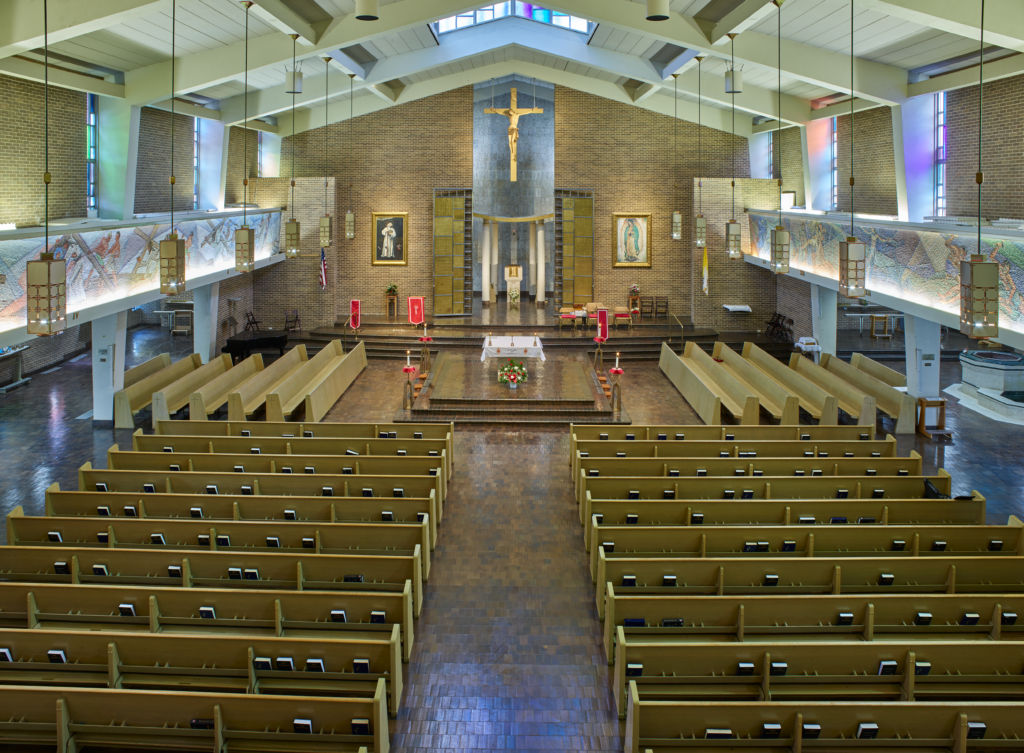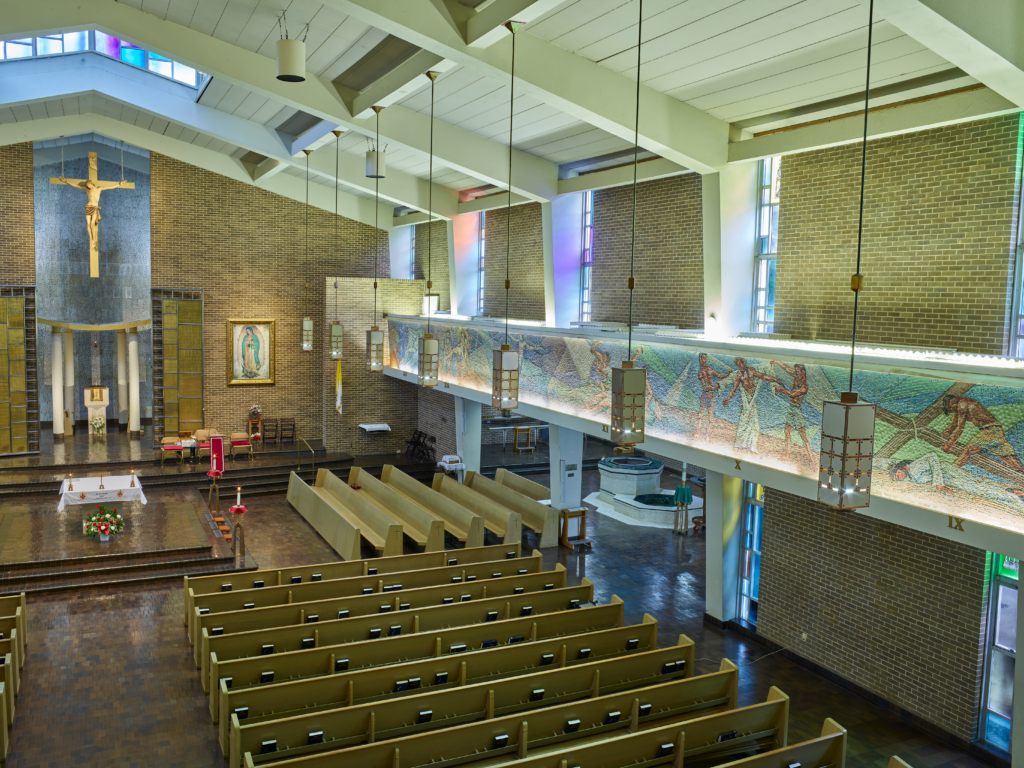The Murals of Octavio Medellín

In 1981, the Dallas Chapter of the American Institute of Architects selected the sculptor and teacher Octavio Medellín to receive its Citation of Honor Award. In his letter, AIA Dallas President Alan R. Sumner wrote, “We specifically want to recognize your dedication to bringing the strong qualities of the earth to your own work and your helping all your students express that same honesty through their own talents.”
Medellín, writing a few days later to accept, replied, “The small contributions that I may have made to art, during my time, up to now, hardly makes up for this great honor.”
Over the more than four decades that Medellín worked in the Dallas area, he had a significant impact on the city’s art scene as well as its architectural landscape. Beginning in the 1950s, Medellín produced numerous public art projects on commission, many of which can still be found across Dallas-Fort Worth today.
Among the most engaging of Medellín’s public works are his 1958 mosaic and painted stucco murals depicting the 14 Stations of the Cross at St. Bernard of Clairvaux Church. Divided into two panels, each 5 by 87 feet, the murals are installed opposite from one another, lining the length of the church along two second-floor balcony spaces. Rather than create 14 individual stations, as is common in many Catholic churches, Medellín integrated them across two murals. Although each of the murals is continuous, Medellín created narrative breaks between the stations through a combination of subtle spacing and dramatic positioning of the mural figures. These effects were further emphasized by the murals’ painted stucco background, which is comprised of saturated fields of contrasting colors. The overall result is 14 scenes that appear distinct yet unified with an almost filmstrip-like quality.


Unlike typical mosaics, in which the tiles are uniformly distributed across a surface, Medellín varied the density and depth of the tesserae to create an impression of distinct textures and surfaces. In Station 4, where Christ meets his mother on the road to Calvary, a structured line of tesserae gives the wooden cross on Christ’s shoulder greater weight. In contrast, the denser yet less ordered tesserae of Christ’s and the Virgin’s robes create a sense of moving expanses of fabric.
The installation of these murals, especially given the complexity of their design, represents a feat of organization. In collaboration with the artist Michal Kozlowski and with the assistance of Dallas artists Clara Millar and Herbert Hughes, as well as Medellín’s two sons, the entire process took eight months. Medellín would also decorate the church’s altar wall, as well as produce a sculpture of the church’s patron saint, Bernard of Clairvaux, for its exterior façade. When he completed these projects, Medellín said in The Dallas Morning News: “The art of this church has been the largest and most important commission given to me in the 30 years that I have been pioneering art in Texas.”
Mark A. Castro is Jorge Baldor Curator of Latin American Art at the Dallas Museum of Art. This article originally appeared in the Spring 2023 “Vibe” issue of AIA Dallas Columns magazine.